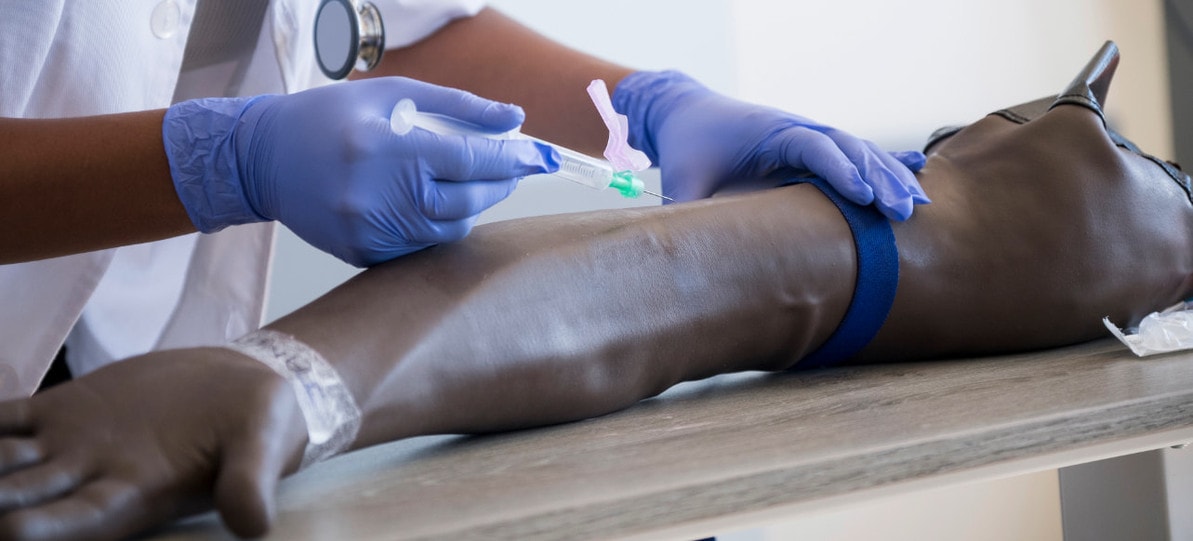The Benefits of Simulation in Healthcare Training
Sep 8th 2025
Healthcare classrooms look very different today than they did twenty years ago. Chalk-dust lectures and “watch one, do one” apprenticeships are giving way to simulation training in healthcare – lifelike scenarios in which students and professionals test their hands-on knowledge and learn from honest mistakes long before a real patient is at risk. When a manikin’s pulse drops after a delayed epinephrine dose, the lesson is unforgettable; when a virtual hip bleeds because a screw went astray, the repair costs nothing but time.
From Role-Play to High-Fidelity: A Spectrum of Tools
Educators rarely rely on a single device. Instead, they weave several types of simulation models in healthcare into one seamless learning pathway:
- High-fidelity patient simulators mimic breathing, bleeding, and drug responses. Learners intubate, defibrillate, and even deliver babies while realistic vitals rise and fall.
- Task trainers focus on one job – placing IV lines, suturing a tendinous tear, or guiding an endoscope – until muscle memory sets in.
- Standardized patients are trained actors who grade empathy, cultural sensitivity, and bedside language in real time.
- Virtual-reality healthcare simulation swaps plastic for pixels, letting a resident drill a rare aneurysm repair at 2 a.m. without reserving an OR.
- Hybrid simulation in healthcare pairs, say, a manikin torso with a live actor’s voice so learners must manage both physiology and emotion at once.
Forward-thinking programs sequence these varied healthcare simulation tools to create a comprehensive curriculum: novices master fundamentals on task trainers, then step into team-based crises on full-scale simulators, finishing with VR refreshers they can run between shifts.
Four Advantages of Simulation
1. Multisensory Learning
Procedures practiced with both mind and muscle embed themselves deeper than words on a slide. A 2023 study in Medical Education found simulation-trained clinicians retained skills longer and transferred them more readily to live patients than peers who learned by lecture alone.
2. A Zero-Harm Environment
Even trainees with the best intentions misjudge dosages or clip an artificial artery. Healthcare simulation technology welcomes those errors on plastic and screens, not people. Then debriefs turn embarrassment into wisdom.
3. Rehearsing the Rare
A rural family doctor may never treat malignant hyperthermia, and an urban ICU might go years without seeing maternal shoulder dystocia. Simulation lets teams drill these low-frequency, high-stakes events until their responses become reflexive.
4. Teamwork Under Pressure
Modern medicine is a relay race, not a solo sprint. Simulation-based training in healthcare teaches closed-loop communication, role clarity, and crisis resource management in a team. These collaborative skills ultimately improve patient care.
Scenes from the Simulation Lab
These healthcare simulation examples demonstrate how detailed, sensory, collaborative, and educational each lesson can be:
On a Tuesday morning, emergency-medicine residents huddle around a manikin whose ECG screams ventricular fibrillation. One learner charges the defibrillator; another secures an airway; a third jots timestamps on the code sheet – all while an instructor tweaks the simulator’s vitals to punish lapses and reward decisive action.
Across the hall, a fourth-year nursing cohort tends to a standardized patient acting out pre-term labor. She grimaces, asks pointed questions about induction risks, and flinches at every IV poke. Students must balance textbook protocols with genuine bedside empathy, then debrief on what felt awkward or reassuring.
After hours, a vascular fellow straps on a lightweight headset for a virtual reality practice run of endovascular aneurysm repair. The software grades fluoroscopy time, contrast volume, and stent placement down to the millimeter – data the fellow carries into the real OR the next morning.
Evidence of Simulation’s Effectiveness
A steady stream of healthcare simulation research underscores what instructors see daily. Simulation training leads to shorter procedure times, lower complication rates, and higher patient satisfaction scores. Sophisticated platforms capture every mistake and verbal cue, handing faculty a granular record for targeted feedback and continuous curriculum improvement.
Importantly, simulation’s benefits aren’t limited to shiny academic centers. Rural hospitals that lack subspecialty mentors can still maintain competence by rotating staff through mobile simulation labs or cloud-based VR. Community colleges use portable manikins to certify high schoolers in CPR, equipping entire communities with lifesavers.
Where Innovation Is Headed
Simulation technology in healthcare has come a long way. Hardware has already shrunk from suitcase to shoebox size and made virtual-reality healthcare simulation more affordable. Artificial-intelligence engines now adjust scenario difficulty on the fly, nudging learners into their “challenge zone” without tipping them into panic. Meanwhile, 3D printers churn out hearts with specific defects, custom airways scarred by decades of smoking, and neonate skulls sized perfectly for burr-hole placement. Learn more about emerging tools in our overview of additive manufacturing for medical education and our guide to innovations in health science education.
As innovation continues in digital realms, simple, tactile tools still pull their weight. Sleek VR headsets can’t replicate the subtle “pop” of inserting a spinal needle or the resistance felt while tying wet surgical knots. That haptic feedback builds true dexterity, which is why Anatomy Warehouse continues to expand our collection of medical simulators; these durable, detail-rich models are built to withstand thousands of practice attempts.
Bringing It All Together
When healthcare educators blend realistic scenarios, structured reflection, and progressively greater challenges, learners begin their careers not just informed but seasoned. They have heard monitor alarms, felt a vanishing pulse, and worked through panic in a controlled space. A patient entering the emergency bay tomorrow benefits from every simulated arrest, allergic reaction, and hemorrhage that came before.
Explore Simulation Resources
Whether you teach high school EMT trainees, fine-tune the abilities of trauma surgeons, or upskill seasoned first responders, simulation makes every minute count. Browse the full range of simulation models and resources at Anatomy Warehouse today, and contact us for expert guidance or a custom quote. Investing in simulation now means safer care, stronger teams, and better patient outcomes tomorrow.
Share:


